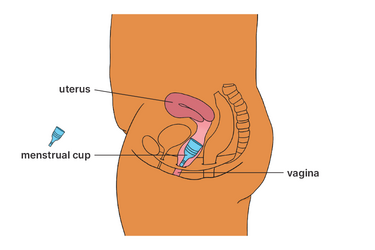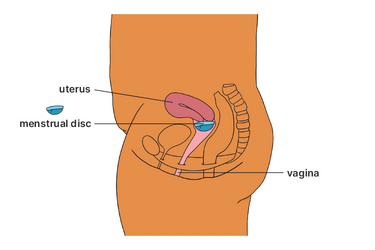There are many types of period products available. You may need to try a few before you find products you like. Learn more about period products, including how to use them, how often they need to be changed and how to dispose of them.
What is the best product to use for periods?
Tampons
Pads
Reusable pads
Period underwear
Menstrual cups
Menstrual discs
Some factors to consider when choosing period products are outlined below.
Tampons are absorbent 'plugs' made of cotton or a combination of cotton and a synthetic material. They are available in different sizes. You insert the tampon into your vagina and change it every three to four hours. See the packaging for instructions.
It is very rare to get toxic shock syndrome from using tampons. Symptoms of toxic shock include feeling unwell or having a fever, rash, diarrhoea or a headache.
It’s important to change your tampon regularly and wash your hands before and after using a tampon. You can put used tampons in your rubbish bin or a sanitary bin, but don’t flush them down the toilet.
Pads are made of absorbent material and come in a range of thicknesses and shapes. Pads have a sticky side, and some have ‘wings’ to hold them in place in your underwear.
If pads irritate your vulva, try 100% cotton, scent-free pads.
Your pad might need to be changed every three to four hours on the heaviest day of your period. You can put used pads in your rubbish bin or a sanitary bin, but don’t flush them down the toilet.
Reusable pads are made of washable fabric and can be used instead of disposable period pads. They are usually made of absorbent fabric such as cotton or bamboo, with a waterproof lining. Just like disposable pads, they come in different shapes and sizes.
They don’t have a sticky side, but they do have 'wings' that can be fastened with clips or velcro.
Reusable pads can be worn with your usual underwear. You can wash them by hand with soap and water or in the washing machine.
Period underwear has layers of fabric that can absorb your period. You can use period underwear alone or in combination with other menstrual products (e.g. you might wear the underwear alone on lighter days).
Period underwear come in a range of thicknesses and styles (e.g. boy leg cut for overnight).
It’s recommended you change your period underwear every 12 hours. You can wash and reuse this underwear.
Menstrual cups are made from rubber or silicone. Menstrual cups are reusable and environmentally friendly. Cups come in different shapes and sizes to suit your body and your period.
You place the cup in your vagina to collect blood. The cups use suction to stay in. Read the instructions before you use a cup for the first time.
Menstrual cups should be washed in soapy water every 8 to 12 hours (depending on the brand), or when full. You should wash your menstrual cup before inserting it and boil it before and after each period.

Menstrual discs are made from plastic, silicone or rubber. They come in different shapes and sizes and can be single-use or reusable.
You should wash your menstrual disc before inserting it and boil it before and after each period.

This content has been reviewed by a group of medical subject matter experts, in accordance with Jean Hailes policy.
© Jean Hailes Foundation. All rights reserved.